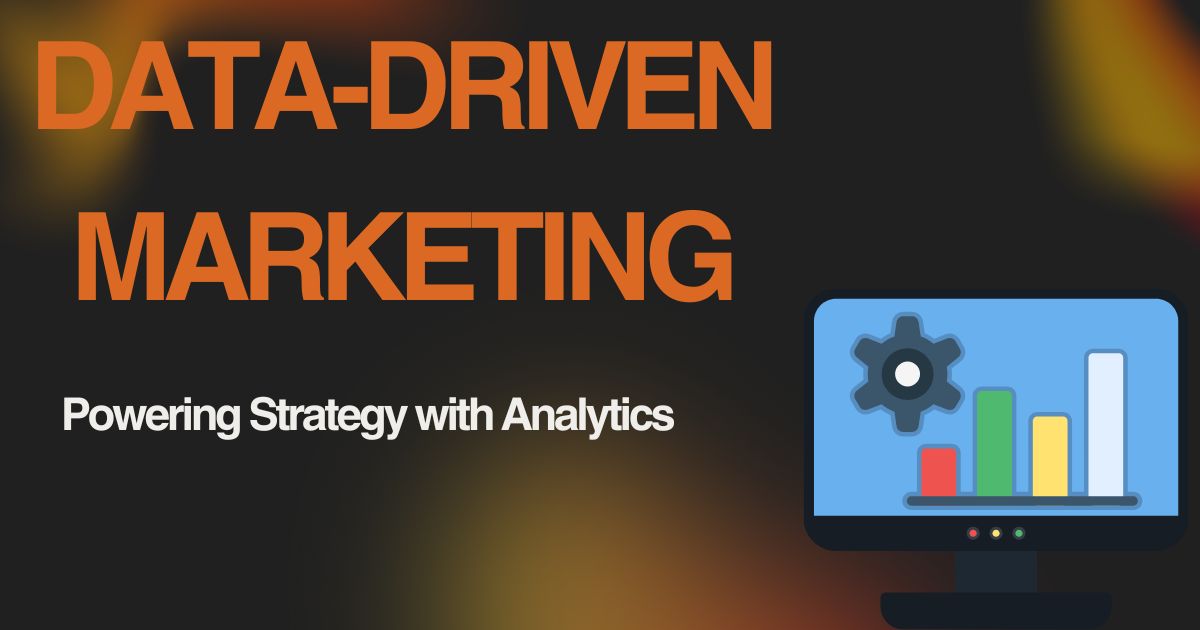
E-Commerce is Ever Changing, and Data is Transforming It!
Data-driven marketing is changing the way organizations engage with their customers, refine their offerings, and deliver tangible results. If you are an e-commerce entrepreneur or a marketer, knowing how to work with and best apply the power of data can liberate you from the restrictions that keep many of your rivals behind and unlock scalability.
I discussed how big data-driven marketing is transforming e-commerce in this article. We’ll explain the concept, show you the benefits, detail the best implementation steps, and provide you with tools, case studies, challenges, and future trends to make sure you succeed.
Comprehending Data-Driven Marketing on an E-commerce Platform
At its simplest, data-driven marketing means using data to make decisions about marketing and to inform strategy. For e-commerce vendors, it’s about tapping into customer behavior, preferences, and engagement data to create targeted campaigns, personalized experiences, and drive ROI.

Data-Driven Marketing vs Petronelli-Promoted Marketing
Instead of guessing and hunches, Data-Driven Marketing depends on analytics tools and actionable data that is well-organized. “User click behavior, abandoned cart metrics, or demographics, each data point brings with it the potential for refinement and improvement.
For example, through website analytics, a company might find that 40% of users are abandoning items at the checkout page. This simple metric could indicate direct actions to reduce cart abandonment, for example, personalized reminders or streamlined checkout processes.
Advantages Of Data-Driven Marketing In E-commerce
Improved Customer Targeting
You can segment your audience by digging into customer data. Data tells you who your customers are, what they want, and how they shop. With demographic and psychographic data at your disposal, you can craft laser-targeted marketing messages that talk directly to your community.
Enhanced Customer Experience
Creating personal shopping experiences is not a luxury; it is a necessity. Shoppers have come to expect personalized recommendations and frictionless shopping experiences. At an operational level, personalized email campaigns, dynamic product recommendations, and data-informed loyalty schemes combine to deliver a great customer experience.
Increased Engagement And Conversion Rates
Delivering relevant advertising to the right people at the right moment, you will see increased engagement and better conversion rates. Whether it is a personalized coupon offer or user-generated content, data-driven strategies lead to more meaningful connections with your audience, which leads them to transact.
Greater Retention and Loyalty
How to Get a Customer to Buy Again
The lifeblood of an e-commerce business is someone buying a product, loving it, and buying another. Businesses that use data to learn purchasing habits, monitor satisfaction, and then design loyalty programs are rewarding customers to return.
Cost-Effectiveness
Instead of throwing loose and less effective campaigns together, data wonkiness means you spend your resources on precision targeting. By targeting their efforts where they can have the biggest impact, companies cut waste advertising spend and maximize ROI.
How to Execute Data Strategy into a Marketing Action Plan

Implementing Data-Driven E-commerce Marketing: A Structured Approach
It is structured rather than completely ad hoc. Here’s how:
Define Your Objectives
Identify what you hope to accomplish. Do you want to engage more, retain more, or convert more customers? Goals set in advance help you keep the data aligned to your business goals.
Collect Relevant Data
Aggregate insights from various touchpoints, including your website, email campaigns, social media channels, and customer feedback. Types of information might be:
-
Demographics
-
Purchase history
-
Browsing behavior
-
Engagement metrics
Invest in Analytics Tools
Make the most of your data. Choose analytical tools that will enable you to gather, see, and interpret data seamlessly. Products such as Google Analytics give us visibility into traffic to our site, how customers are navigating to conversion, etc.
Segment Your Audience
Now categorize customers based on your findings in step 1. This way, you can throw your marketing efforts at the wall and it will stick for each targeted group.
Create Data-Driven Campaigns
Divide your audience , then create special campaigns for each group. For example:
-
Discounts to keep customers who haven’t ordered in months.
-
Recommend trending items to shoppers who buy the newest products.
Monitor and Optimize
Data-Informed Marketing Feeds on the Feedback Loop
Marketers are all about iterating. Employ performance metrics to measure campaign success and tweak strategies depending on what’s working and not.
Data-Driven Marketing Tools and Technologies
This kind of data-driven marketing requires the right tools and platforms:
-
Google Analytics (Website performance): Traffic source data, customer journey data, and conversion data
-
HubSpot (CRM and automation): Email marketing automation, customer tracking, and extensive reporting
-
Klaviyo (Email marketing): Highly effective data-driven email and retargeting campaigns
-
Hotjar (User experience): Heatmaps and user recordings
-
Facebook Ads Manager (Paid targeting): Tweak ads for targeted audiences
Barriers in Implementing Data-Driven Marketing and Remedies

Challenge 1. Data Silos
Solution: Centralize the data into one place, like a customer relationship management system.
Challenge 2. Privacy Concerns
Solution: Have clear and transparent privacy policies, and follow the rules such as GDPR.
Challenge 3. Data Overload
Solution: Concentrate on KPIs that directly contribute to business goals.
What’s Next in Data-Driven E-commerce Marketing
The next phase of data-driven marketing is an even higher level of personalization, predictive analytics , and machine learning. Here’s what to expect:
-
AI-Assisted Intelligence (e.g., ChatGPT for copy and customer interactions)
-
Voice-Based Shopping through Natural Language Processing
-
Real-Time Personalization, predicting and displaying options personalized to the immediate user context.
Why You Should Integrate Data-Driven Marketing into Your Business
Data-driven marketing isn’t a choice anymore; it’s the framework that the most successful e-commerce companies thrive in. It is the leverage of analyzing and acting on data that separates good brands from great brands.
If you’re enthusiastic about upending your marketing strategy using data, take little steps but dream big. Invest in the right tools, follow steps based on your particular needs, and keep an eye on changing trends. Data is not a number, but the answer to unlocking the potential that is your brand.
Leave a Reply